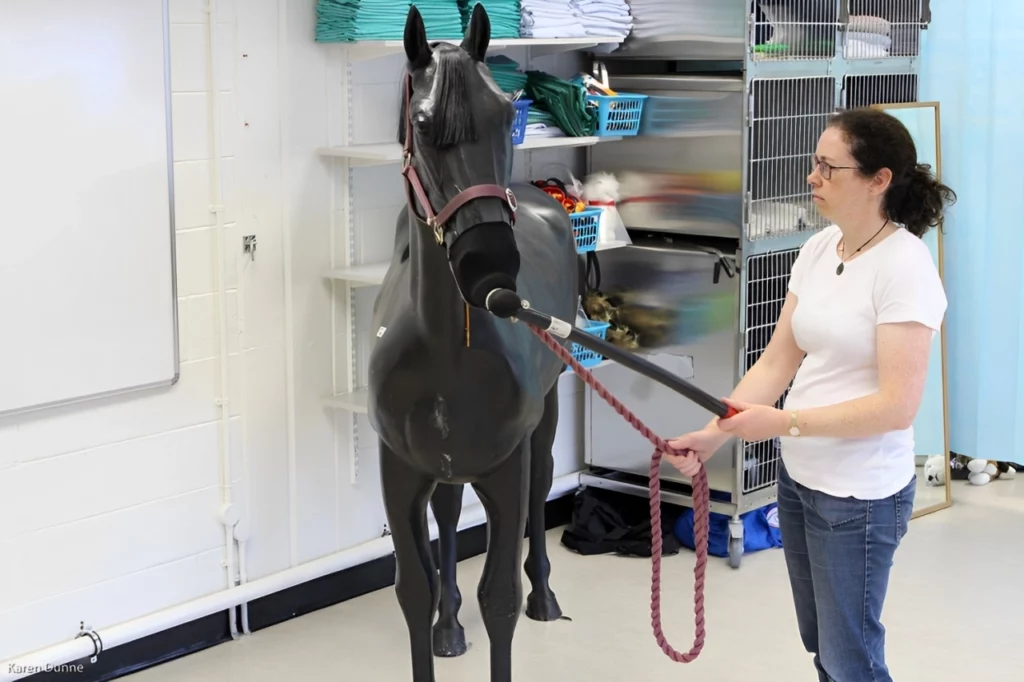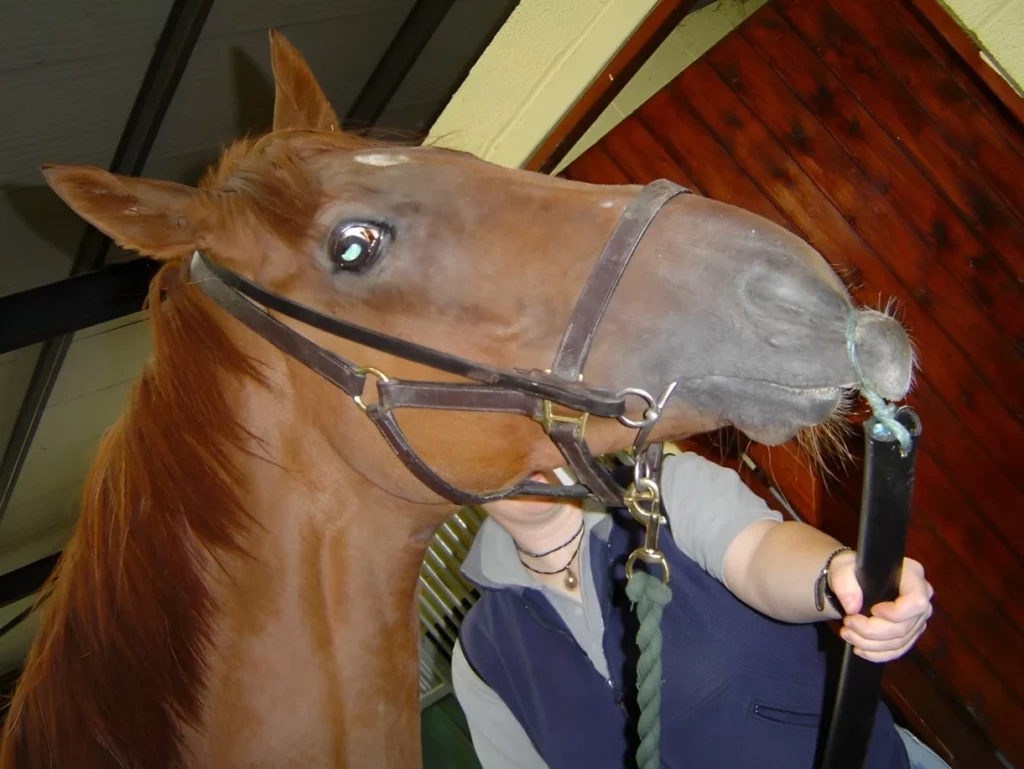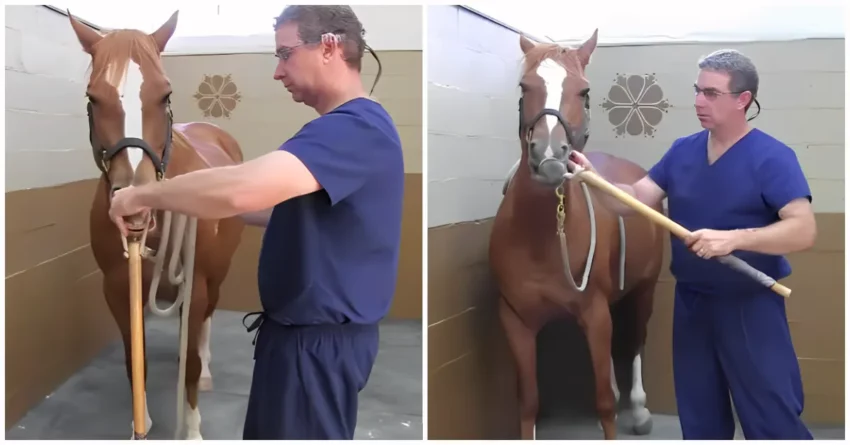Twitching is a traditional method used to restrain horses during medical treatments, grooming, or other necessary procedures, especially when a horse becomes anxious or uncooperative. This technique involves applying pressure to a horse’s upper lip or, in some cases, the ear, using either hands or a tool called a twitch. A common twitch consists of a wooden or metal handle with a loop made of rope or chain at one end, which is placed around the horse’s upper lip and tightened. The pressure applied by the twitch is believed to have a calming effect, making it easier to handle the horse during potentially stressful situations.

The exact reason why twitching calms horses is still debated. One theory suggests that twitching stimulates the release of endorphins, the body’s natural pain-relieving chemicals, which create a temporary sedative effect. Another idea is that the pressure of the twitch simply distracts the horse, drawing its attention away from whatever procedure is being done. It could also be a combination of these effects that helps keep the horse still and manageable. While some handlers rely on twitching as a quick and effective way to control horses, others question whether it is the most humane method available.

Not all forms of twitching are considered safe or acceptable. While lip twitching is the most commonly used and is believed to cause minimal discomfort when applied correctly, ear twitching is strongly discouraged. Studies have shown that applying pressure to a horse’s ears can cause significant stress and may lead to long-term behavioral problems. Horses have sensitive ears, and using a twitch in this area can be painful rather than calming. Most professional handlers and veterinarians now recommend avoiding ear twitches altogether and using the lip twitch only when absolutely necessary.

Although twitching has been a common practice for many years, it remains a subject of debate among horse owners, trainers, and animal welfare groups. Some argue that it is a necessary tool in certain situations, especially when a horse’s cooperation is needed quickly. However, others believe that it can be stressful and even harmful if not done properly. If twitching is used, it should only be as a last resort and performed by someone who knows how to apply it safely. Incorrect use of a twitch can cause unnecessary discomfort and may even make the horse more resistant in the future.

In recent years, more humane handling techniques have gained popularity, as trainers and veterinarians work to reduce stress for horses. Methods such as desensitization training, positive reinforcement, and mild sedation under veterinary supervision are being used instead of traditional restraint techniques like twitching. These newer approaches help build trust between horses and their handlers, making procedures easier without causing unnecessary discomfort. Many experts agree that it is better to train horses to accept handling in a calm and patient manner rather than relying on physical restraint.

While twitching is still used in some cases, it is important for horse owners and handlers to consider the animal’s welfare. Exploring alternative methods and using twitching only when absolutely necessary can help ensure that horses are treated with care and respect. When done correctly and responsibly, twitching can serve as a useful tool, but it should never replace proper training and gentle handling. As awareness grows about humane horse care, more people are choosing methods that prioritize the horse’s comfort and well-being, creating a better experience for both the horse and the handler.
